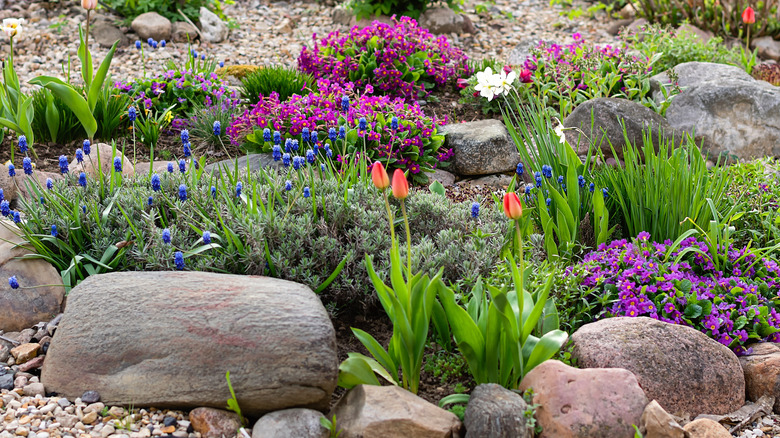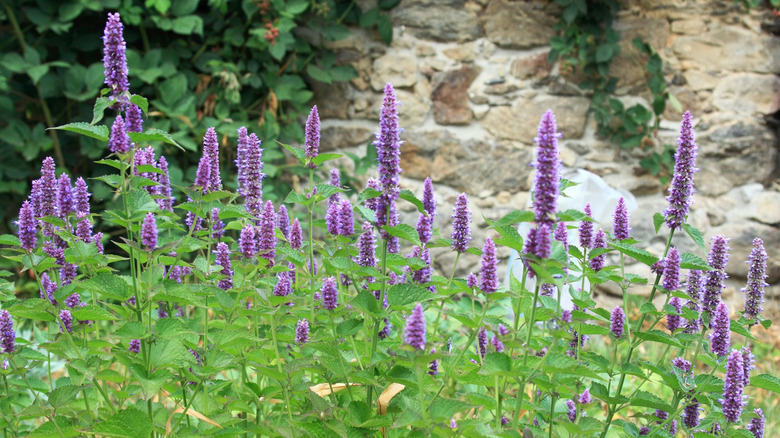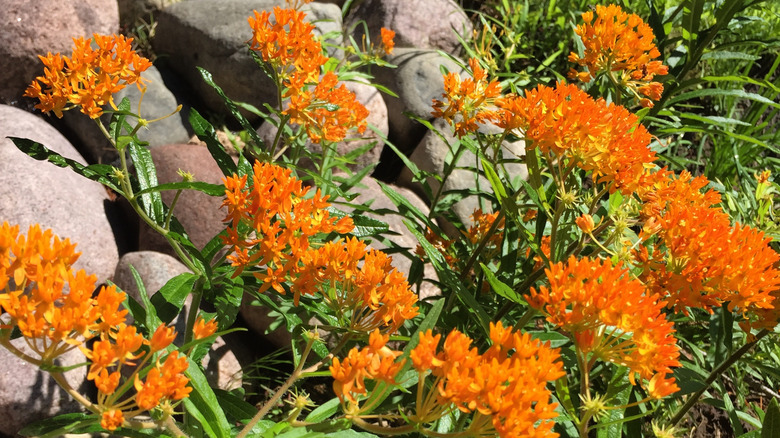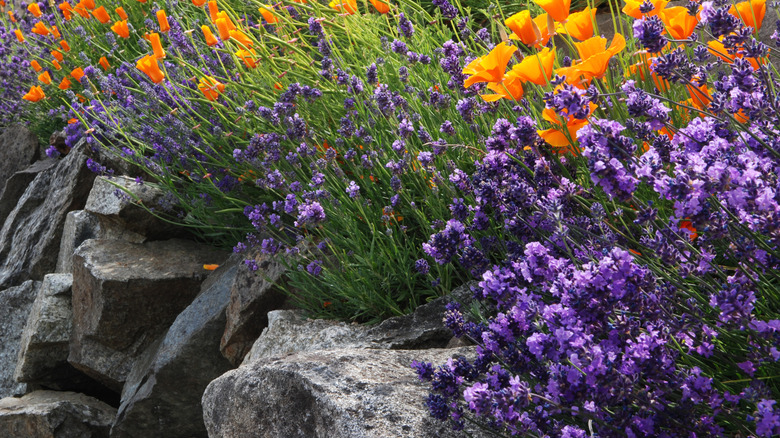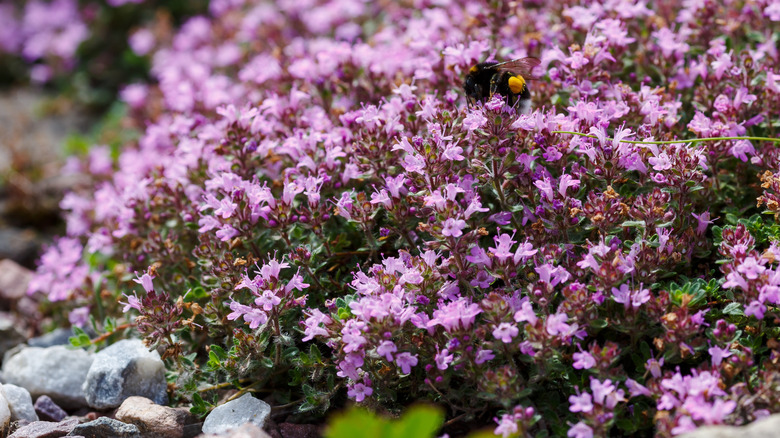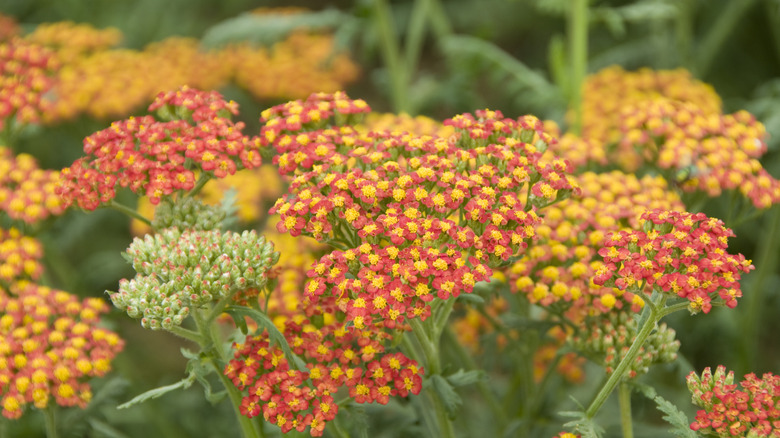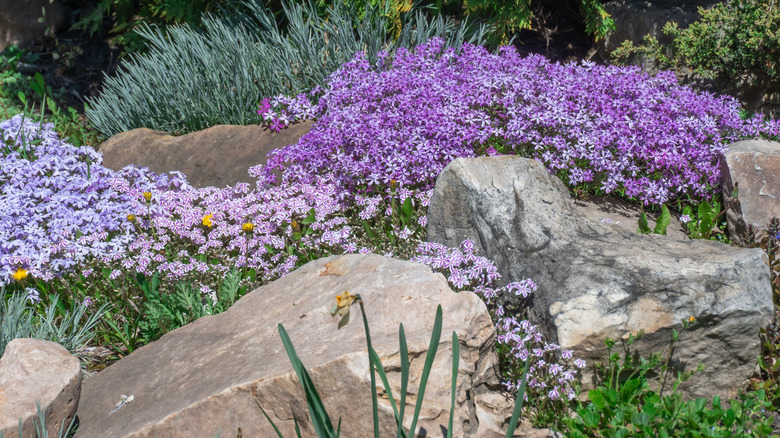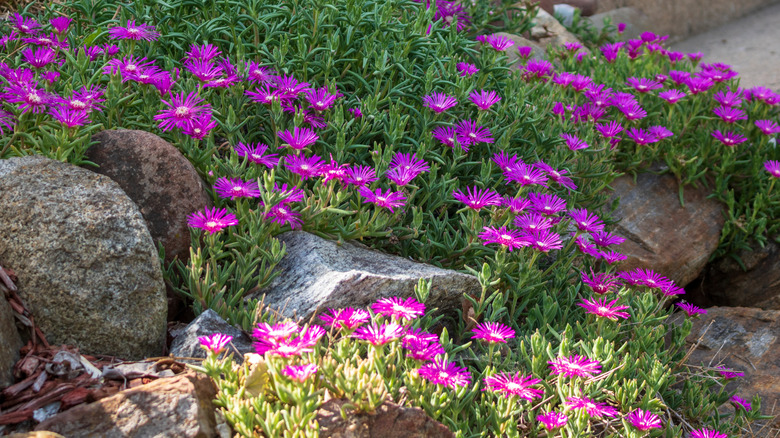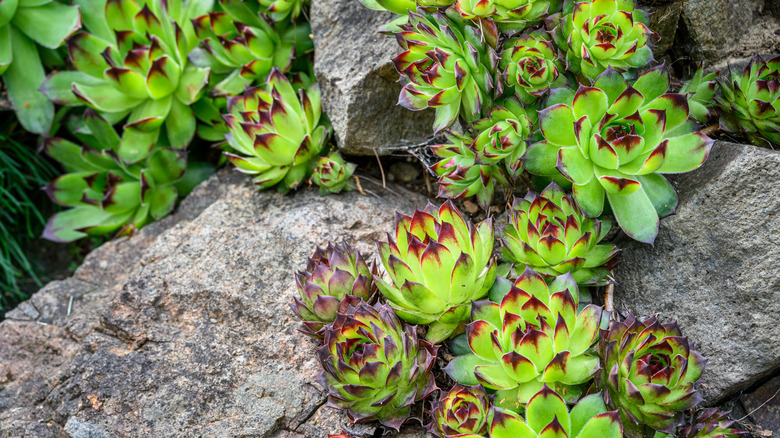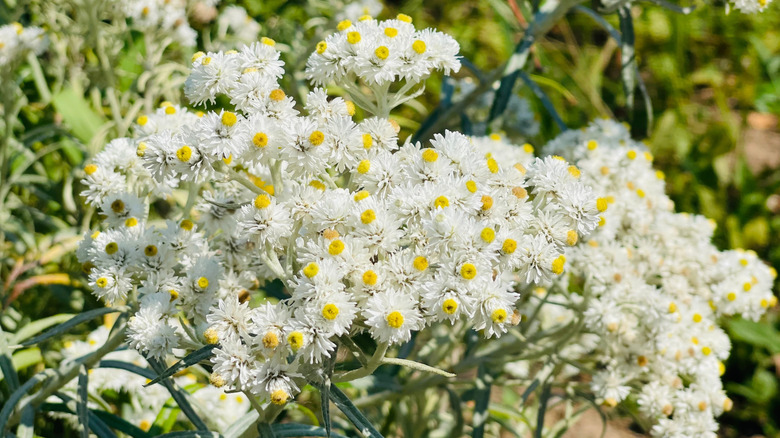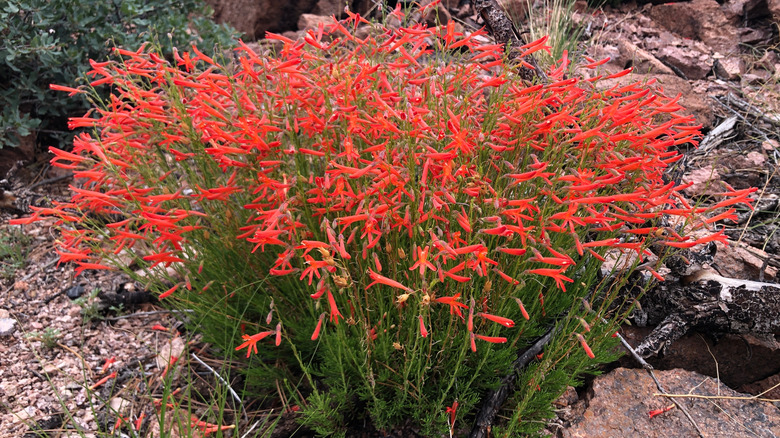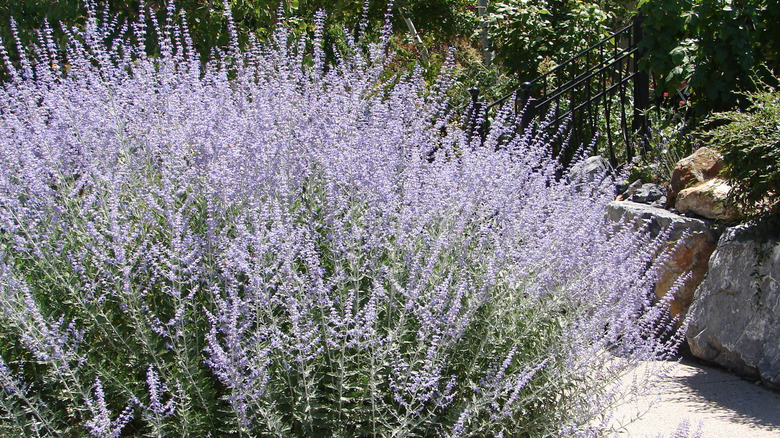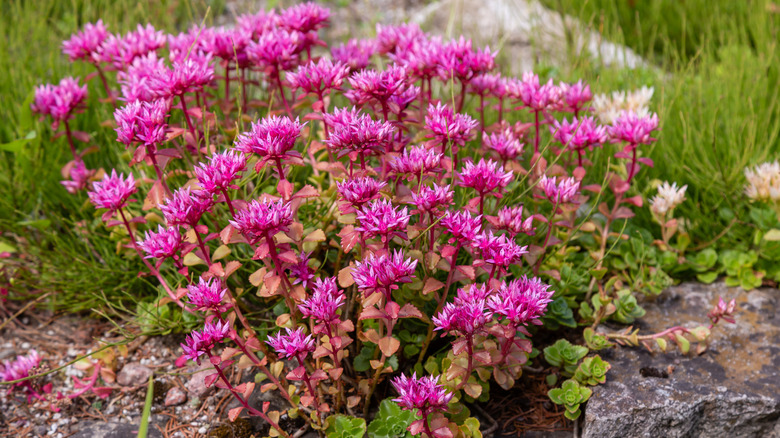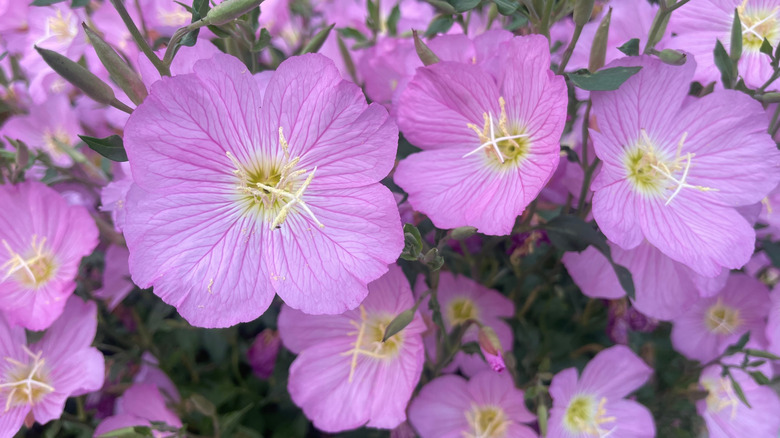Transform A Sunny Rock Garden With 14 Low Maintenance Perennials
Do you feel inspired when looking at photos of beautiful rock gardens? If so, then you may be ready to start choosing plants for a rockery of your own. By picking perennials from among a selection of low maintenance flowering plants that will thrive in the sun, you can make sure that your landscape will be off to a great start, and watch with admiration as the plants thrive, filling your rockery with gorgeous flowers and eye-pleasing foliage.
When planning this type of landscape, gardeners should keep in mind that a rock garden will be the most compelling when many different types of plants are included, so choose species with different heights, textures, and different bloom types and colors. However, be sure to choose multiples of each species as well and grow them in groups of odd numbers for a more natural appearance. And of course, gardeners will also want to select perennials that are well-adapted to their climates for a successful, low-maintenance landscape.
Agastache
With tall spikes of colorful tubular flowers, members of the Agastache genus, commonly known as hyssop or hummingbird mint, provide dramatic additions to the rock garden and attract pollinators while flourishing in full sun locations. With many different species and varieties, Agastache bloom colors come in shades of blue, purple, pink, orange, yellow, or red. With lance-shaped leaves, these low maintenance members of the mint family thrive in USDA Hardiness Zones 5 to 10.
Butterfly milkweed
Milkweeds are well known to attract monarch butterflies, but what's less commonly understood about these low maintenance plants is that there are many different species of milkweed — and some can grow in rock gardens, such as butterfly milkweed (Asclepias tuberosa). Also known as butterfly weed, butterfly milkweed has narrow green leaves and holds its clusters of orange flowers at the ends of its stems. Gardeners can grow butterfly milkweed in zones 3 to 9 in full sun locations. Native plant enthusiasts will be happy to know it is native to much of the continental US, and parts of Canada.
Chives
Perhaps best known as a member of the herb garden, chives (Allium schoenoprasum) are highly ornamental as well as being edible — and they prefer sunny locations. Their lavender colored flower heads bob atop grass-like foliage, adding interest and variety to the landscape. Whether incorporating chives into a rock garden or an edible landscape, this low maintenance relative of onions and garlic will grow as a perennial in zones 4 to 8.
English lavender
Known for its distinctive, calming scent, English lavender (Lavandula angustifolia) has fragrant, silvery green foliage and spikes of gorgeous purple flowers. Adapted to full sun and rocky soils, this soothing perennial herb is well adapted to growing among stones and gravel. Gardeners in zones 5 to 9 can grow English lavender in their landscapes, and this evergreen low maintenance herb can also be included in butterfly gardens.
Creeping thyme
Creeping thyme (Thymus serpyllum) is another herb that can serve two purposes in your rock garden – both as an ornamental, and an edible plant. Let's make that three purposes — pollinators also love creeping thyme's pink or purple blooms. With small oval leaves and tiny tubular flowers, this creeping, low maintenance plant makes an excellent ground cover, and can be grown by gardeners in full sun, in zones 4 to 9.
Common yarrow
Common yarrow (Achillea millefolium) brings interest to the rock garden with its feathery foliage and umbrella-shaped flower heads that attract pollinators. While the species bears white or yellow flowers, cultivars of common yarrow are available with blooms in shades of orange, pink, red, apricot, magenta, or purple. Grow common yarrow in gardens located in zones 3 to 9 and provide these low maintenance plants with full sun.
Creeping phlox
Creeping phlox (Phlox subulata) is a low-growing plant that is covered with linear leaves and star- or cross-shaped tubular blooms that appear in blues, pinks, purples, reds, or white. Also known as moss phlox or rock phlox, these creeping plants are perfectly adapted to growing in sunny locations in rock crevices or hanging over stone ledges. This low maintenance ground cover plant is also a favorite of pollinators, and can be grown in zones 3 to 9.
Hardy ice plant
Hardy ice plant (Delosperma cooperi) is a low growing, low maintenance succulent, covered with bright flowers that are usually pinkish purple — though there are also varieties with blooms in white, red, apricot, or yellow. With succulent, needle-like leaves, hardy ice plant prefers at least 6 hours a day of direct sunlight and rocky soil, making it an ideal candidate for a rock garden perennial in zones 6 to 10.
Hens and chicks
Also known as houseleeks, hens and chicks (Sempervivum spp.) are succulent plants whose fleshy leaves form beautiful rosette shapes. When these low maintenance plants flower, they produce star shaped blooms at the end of long stems. These low-growing and creeping succulents look perfect cascading over low rock walls, or growing in crevices between stones. Hens and chicks are perennial in zones 4 to 8 and require a sunny location to thrive.
Pearly everlasting
A lovely choice for high elevation and low elevation gardeners alike, pearly everlasting (Anaphalis margaritacea) has narrow, grayish-green leaves, and attractive clusters of small white flowers with yellow centers. This wildflower, native to much of the U.S., attracts bees and butterflies to its blooms and can be grown as a perennial in zones 3 to 8. Pearly everlasting fits in perfectly to rock gardens, requires little maintenance, and can be grown in full sun or part shade.
Penstemon
Penstemons are beautiful, long-blooming perennial plants, many of which prefer sunny locations and can be included in rockeries. Also known as bearded tongue, the Penstemon genus contains hundreds of species, making them wise, low maintenance choices for gardeners in most regions of North America. Producing flowers that are funnel-, bell-, or tubular-shaped, and appearing in a wide range of colors, penstemons are highly attractive to pollinators. Gardeners should doublecheck growing info for their selected species, but many of these plants are perennial in zones 5 to 8.
Russian sage
Gardeners hoping to add some height to their rocky landscapes should consider the lofty Russian sage (Salvia yangii). These low maintenance perennials have delicate, silvery greenish gray foliage with tall spikes of blueish purple flowers – and it's easy to successfully grow Russian sage plants in a rock garden. Gardeners in zones 5 to 9 can grow this deer resistant herb in full sun to attract hummingbirds as well.
Sedum
Sedum, also known as stonecrop, is a genus of succulent plants that prefer full sun to part shade. These very low maintenance plants have fleshy leaves and clusters of flowers shaped like stars that appear in a range of colors. Sedums are spreading plants that are great for fall color and look perfectly at home when grown among stones. There are hundreds of sedum ground cover varieties and species so hardiness will vary, but there are many types that are perennial in zones 3 to 9.
Showy evening primrose
Showy evening primrose (Oenothera speciosa) has large flowers on upright or sprawling plants that are covered with narrow green leaves. These plants are well-adapted to growing in rocky or gravelly soils in full sun, require little maintenance, and will thrive in zones 5 to 8. If you're trying to bring more pollinators into your yard and garden grow showy evening primrose — bees love their cup-shaped blooms.
